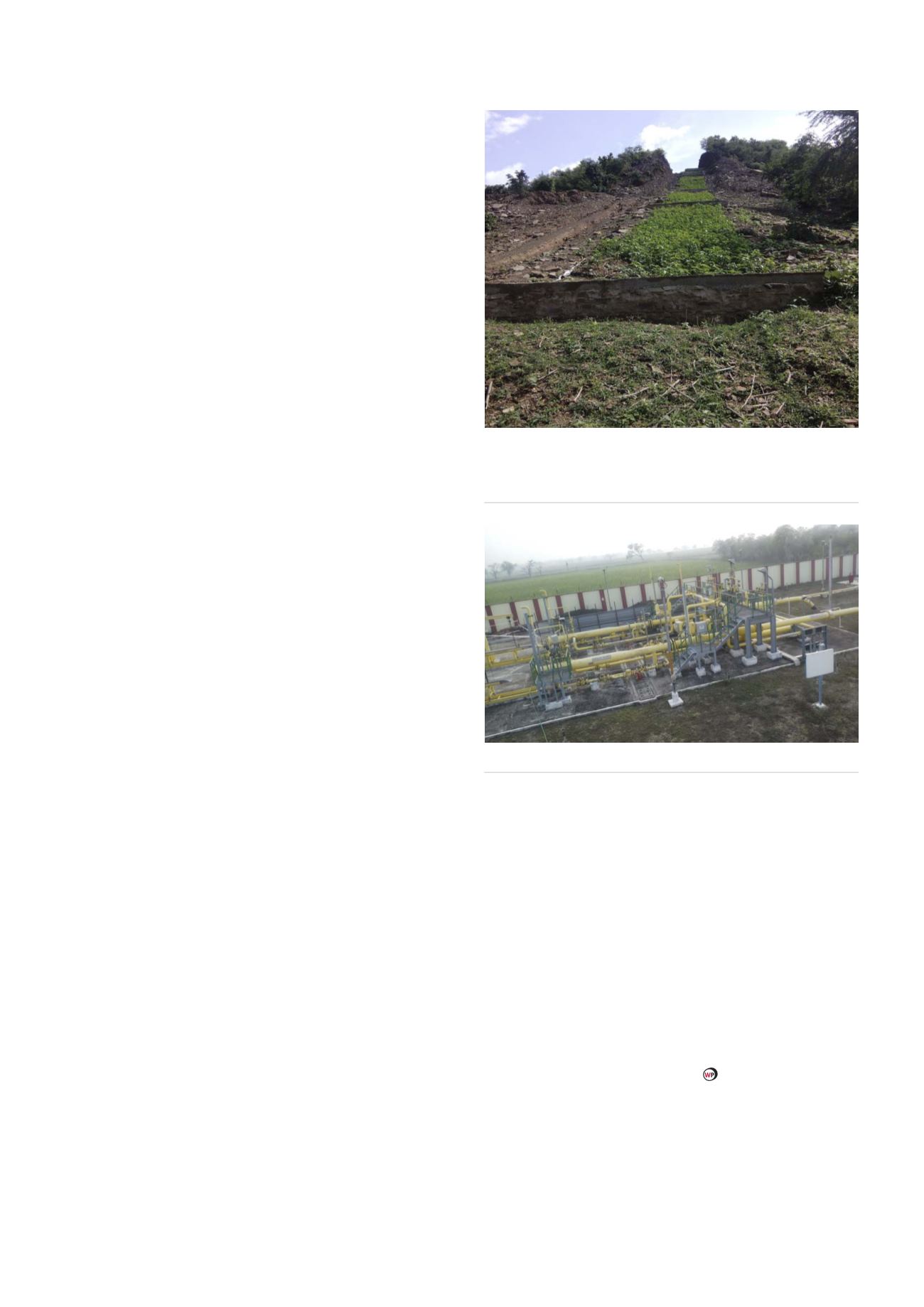
Incomplete surveillance of gas pipelines
In the audit conducted by CAG, it was observed that the
PNGRB mandated surveillance of the pipeline ROW through
means such as GPS, CCTV, satellite-based monitoring, and
aerial patrolling to detect abnormal activities around the
gas transmission pipelines. However, the surveillance was
incomplete in the case of the aforementioned pipeline
operator, as approximately 20% of its network lacks GPS-
based patrolling.
Thus, from the earlier discussion, the core element
which came to the fore was the non-adherence to standard
operating procedure, particularly with respect to gas
specifications, non-compliance to various directives of the
agencies responsible for safety of pipelines, and breach of
various provisions of pipeline integrity management systems
in place – besides non-compliance of the recommendations
by the PNGRB and CAG.
It is therefore required for entities to comply with
various provisions for pipeline safety, as consistent pipeline
failures have the potential to reduce the economic benefits
that can be derived from the transportation of natural gas.
It can dent the confidence of the public, which could slow
India’s direction towards a gas-based economy. Some of the
steps needed to make India’s gas pipeline industry robust are
outlined as follows:
)
Given the high number of pipeline ruptures due to
third-party damage, there should be a well-articulated
framework akin to the ‘Common Ground Alliance’ of the
US, wherein there should be one number such as ‘811’
which is used as an emergency number by the third-
party before digging the pipeline, e.g. ‘Dial before you
dig’. This has been recommended by the PNGRB on
several occasions at the time of any reported pipeline
failures due to third-party damage. Moreover, excavators
should be brought under stringent regulation to take ‘no
objection certificate’ from the pipeline operator before
initiating any activities around the pipelines, as is the
case in the Middle East.
)
To deal with pipeline failures in the form of corrosion,
each pipeline operator should make optimum use of
several integrity assessment tools available as per the
integrity management system, such as ILI, cathodic
protection monitoring, and surveillance – including
ground surveys and unmanned aerial vehicles, particularly
at critical and inaccessible stretches.
)
Regarding dealing with corrosion, it is observed that there
is a competency gap against the job roles of personnel,
which needs to be filled through planned training. This
training should take care of knowledge of various modes,
methods, and conditions of corrosion, and the design
of an integrity management system. Further, taking steps
during the design stage itself, such as a selection of
correct material for the system, consideration of process
and construction parameters, determining its design life,
provision of corrosion allowance, etc., could help avoid
the majority of corrosion situations.
)
There is a stringent need for an intensive public
awareness campaign about pipeline safety, alongside
corporate social responsibility activities and local level
intelligence. If such awareness is made compulsory, it
would act as an additional layer of protection for gas
pipeline infrastructure.
Finally, as noted by the PNGRB 2012 regulation – Integrity
Management System for Natural Gas Pipelines – the
integrity management system should be regularly evaluated
and reviewed in line with changes not only in design and
operation, but also in both the physical and regulatory
environment in which the system operates, whilst also
supporting the operator’s integrity goals and taking full
advantage of improved technology.
References
1.
Business Standard, ‘
Pipeline dreams of gas-based economy: Hurdles in govt’s
$118-bn masterplan’, (2019).
Disclaimer
The views expressed in this article are those of the authors, not their companies.
Figure 2.
SHPPL (Reliance Gas Pipeline Limited) 16 in. pipeline
crossing the Dhakarbari Hill (Madhya Pradesh-India) – soil
erosion protection on pipeline with vegetation and construction of
retaining walls.
Figure 3.
Intermediate pigging station facility.
MARCH 2020
/
World Pipelines
21








